PROBLEM
What will work look like in the post-carbon, post-capitalist future? As more and more workers get automated out of jobs, what will happen to the common person when their labor becomes superfluous? How will the climate crisis impact how we produce, allocate and share resources?
SCOPE
We don’t need to wait for full automation to learn about what happens when productive bodies are no longer needed for their labor power. When there aren’t enough jobs, alternative economic models emerge. The rise of the sharing economy is a testament to this.
While there is a lot of debate over what the sharing economy even is, and even more disagreement over how to practice economics in the face of climate change, one thing is certain: there are no jobs on a dead planet.
Working under the umbrella of art collective, Anxious to Make, our team developed a speculative design workshop for reimagining life, work, and cooperation in a post-carbon, post-capitalist world. Our workshop includes a video art mash-up of a speculative text, and an algorithm that uses combinatorial logic to randomly generate over 4000 different future design challenges, ranging from the emancipatory and pragmatic to the terrifying and absurd.
ROLE
Artist, Algorithm Designer, Javascript Developer and Workshop Facilitator
Team comprised of one other person, Liat Berdugo, who focused on research, screenwriting and video production. Together we designed, structured and facilitated the workshop.
PROCESS
I. Research & Development
Our journey begins with Peter Frase’s, Four Futures: Life After Capitalism, a cautionary tale of “social science fiction” in which Frase imagines four idealized, hyperbolic futures that emerge as the forces of technological automation and climate change usher us into the unknown unknown.
While most of the media hype about automation these days usually ignores politics and class struggle, Frase’s project focuses on how class power will influence who benefits from automation and who loses.
He speculates that how our social environment is structured (horizontally or hierarchically), along with how the resources of our natural environment are managed under certain conditions (abundance or scarcity), will determine our fate.
The details of how it all plays out are explored in four future scenarios, within which the spectrum of winners and losers ranges from utopic egalitarian dream to dystopic feudal nightmare.
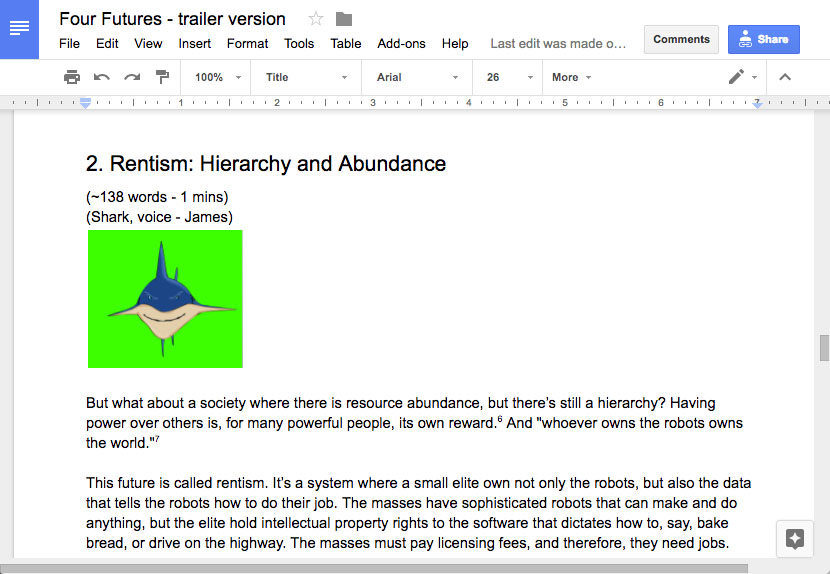
Early script from Frase's text for our video mashup, 'After Work' 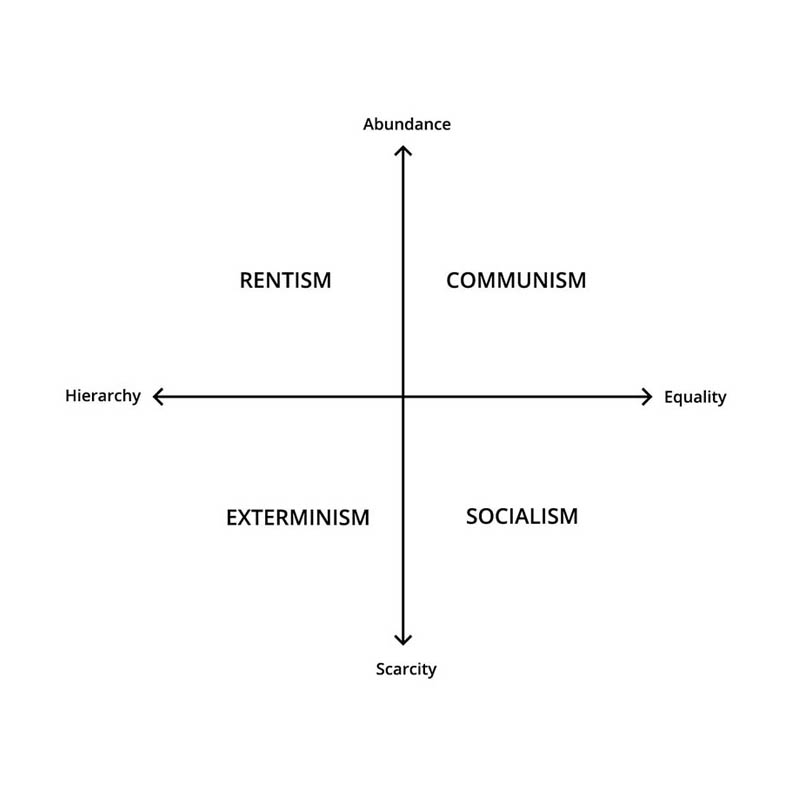
Conceptual matrix of Frase's four futures: abundance with equality (Communism), abundance with hierarchy (Rentism), scarcity with equality (Socialism), or scarcity with hierarchy (Exterminism). II. Algorithm Design Sprint
I begin by making lists of dozens of sharing business models, tech platforms types, governance models, and hundreds of possible other factors to seed the generator with.
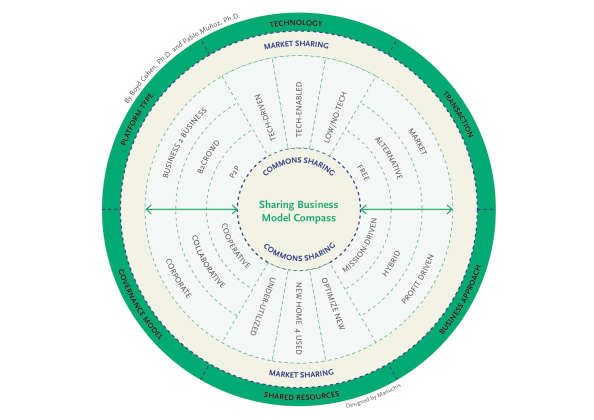
Sharing Business Model Compass Based on the Four Futures – Communism, Rentism, Socialism, and Exterminism – I design a simple algorithm that randomly selects one of the futures:
function getFuture() {
var model = '',
models = {},
xfactor = '',
xfactors = {},
future = '',
futures = [
'Communism (Egalitarianism and Abundance)',
'Rentism (Hierarchy and Abundance)',
'Socialism (Egalitarianism and Scarcity)',
'Exterminism (Hierarchy and Scarcity)'
];
future = futures[Math.floor(Math.random() * futures.length)];
if (future === 'Communism (Egalitarianism and Abundance)'){
...
} else if (future === 'Rentism (Hierarchy and Abundance)') {
...
}
...
}
Next, the algorithm generates a design challenge for that future by combining a collaborative business model with a target market, or x factor, resulting in:
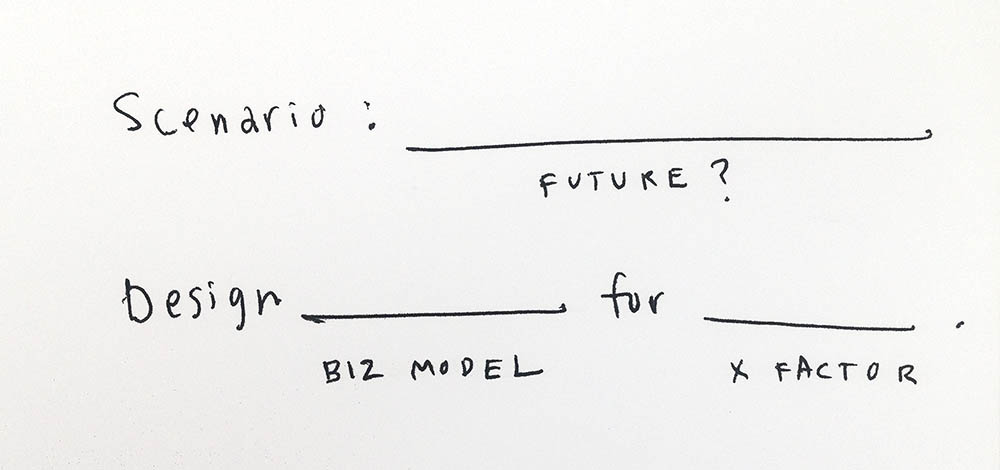
Finally, I test.

After generating hundreds and hundreds of futures, some of the combinations still seemed a little off, and not in a good way. My collaborator and I reevaluate the list of future variables, removing any x factor that feels unlikely, confusing or incoherent. I also update our business models to better match future conditions with appropriate business approaches, governance models and platform types.
This is an ongoing process.
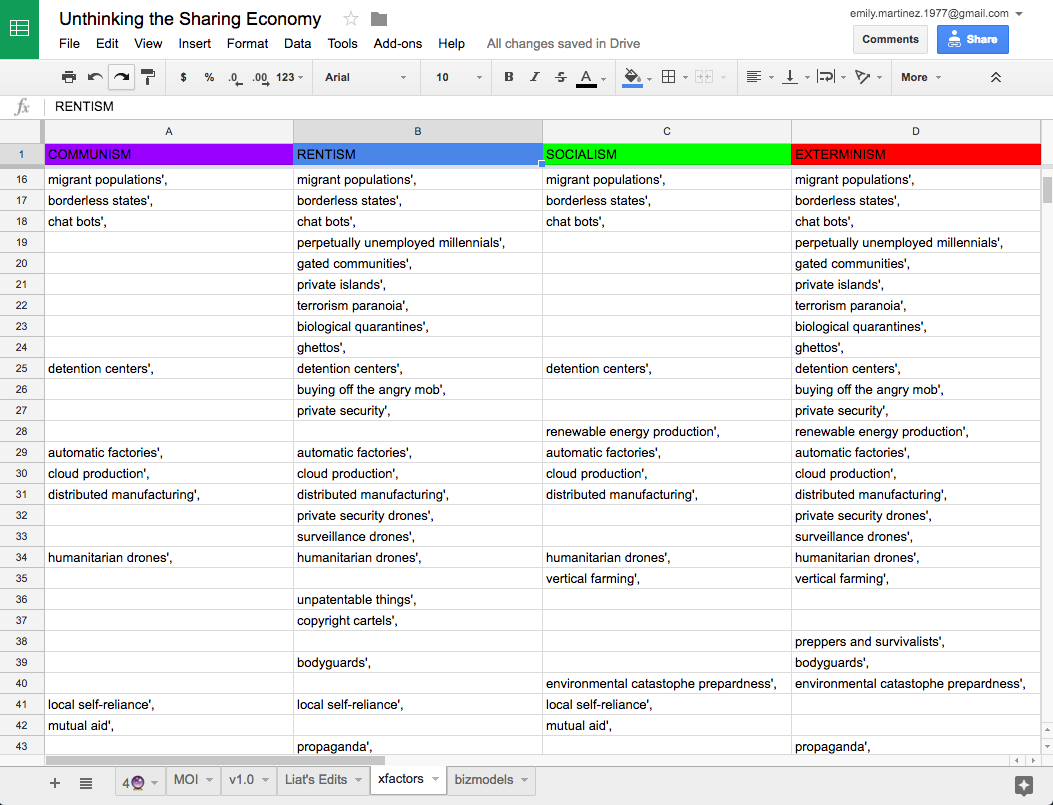
Curating the future through algorithmic design. III. Prototyping the App
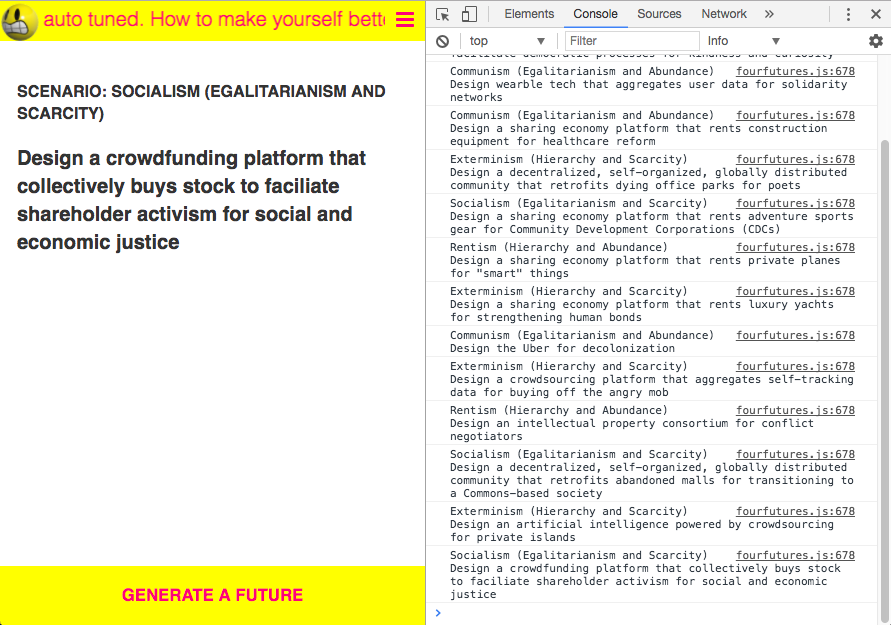
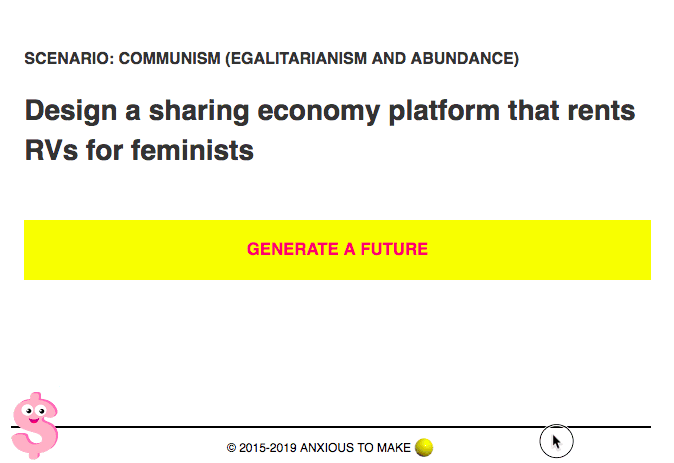
IV. Polishing the User Experience
Because I wanted to make sure that you could also try this at home, on your mobile phone, or on any device with internet access and a screen:
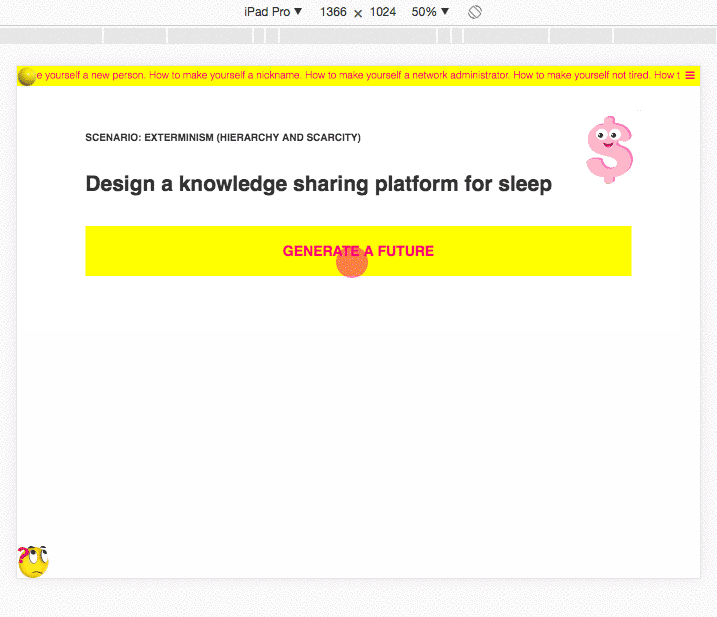
Because print styles matter:
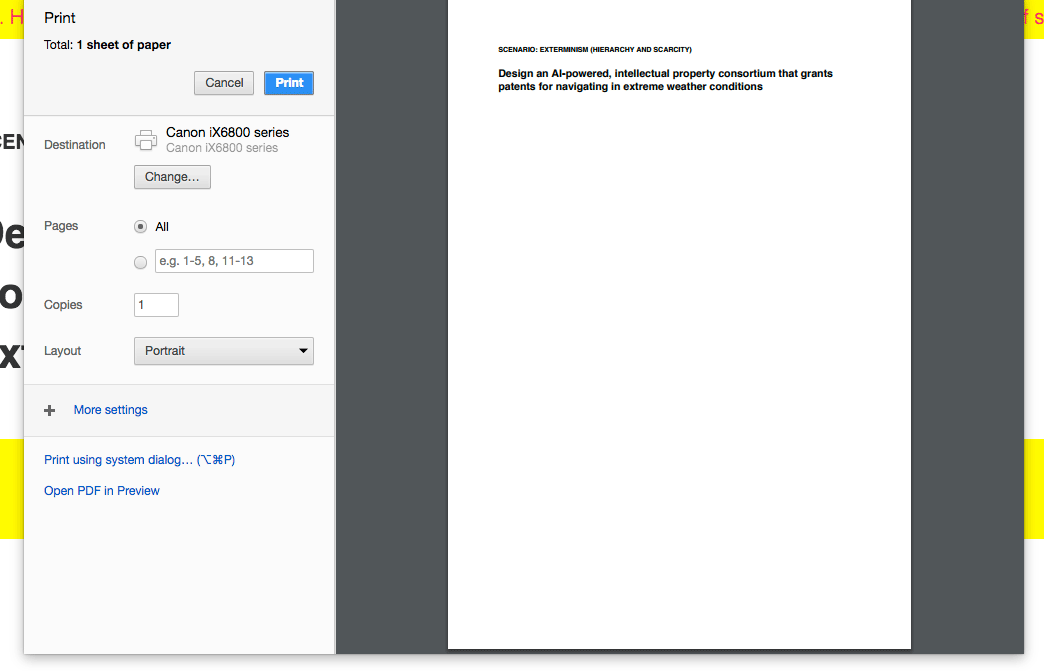
V. Running the Workshop
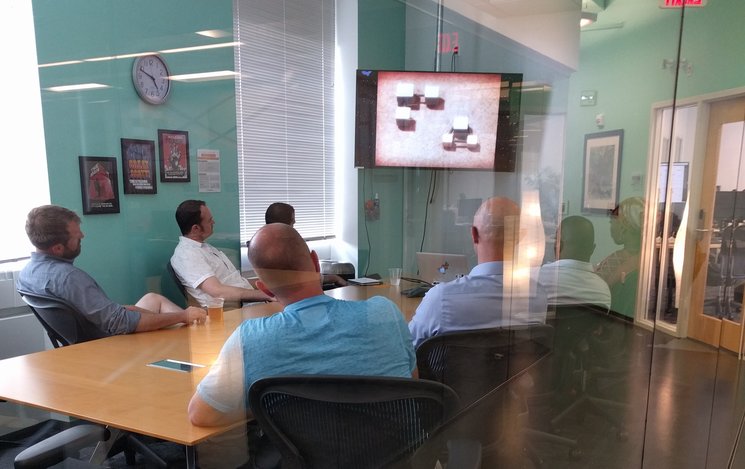
Venture Cafe, St Louis, MO We begin by watching a short video:
After setting the stage with our dystopian production, participants fill out surveys with tiny golf pencils while listening to Muzak.
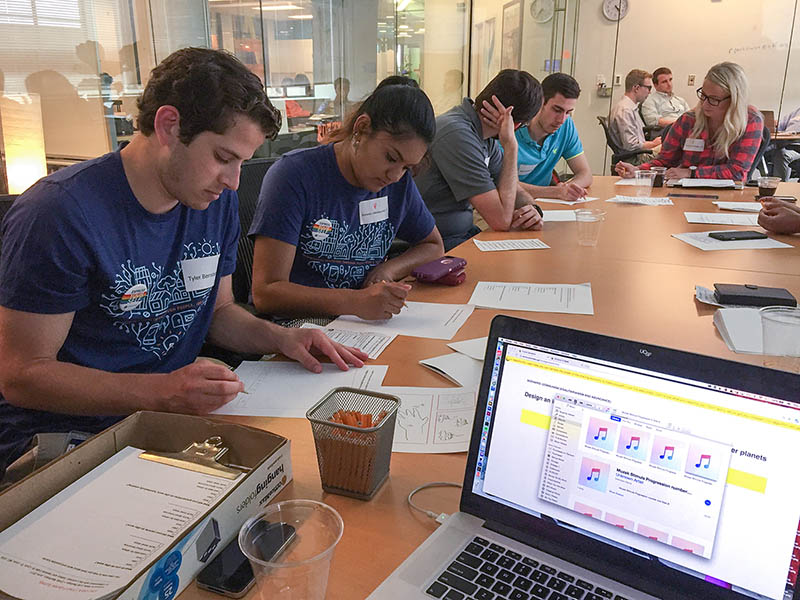
After surveys, we finally move on to ideating. Participants get into small groups, forming 2-3 person teams. We run the generator like this:
- Me: Generates future and shouts it out.
- Participant: Exuberantly raises hand to claim.
- My collaborator: Prints design challenge.
- Participants: Go!
With dystopic/utopic future challenge in hand, teams collaborate on designing their new enterprises:
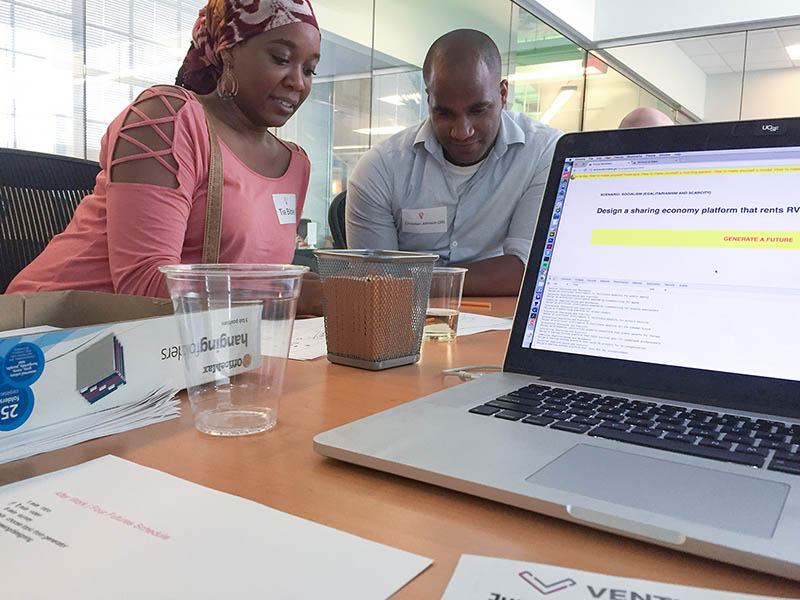
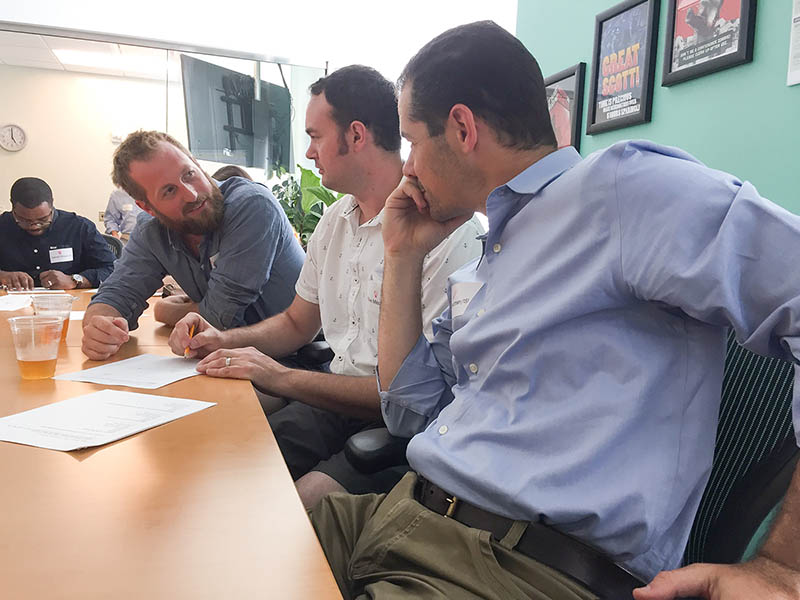
OUTCOME
Some drawings by participants:
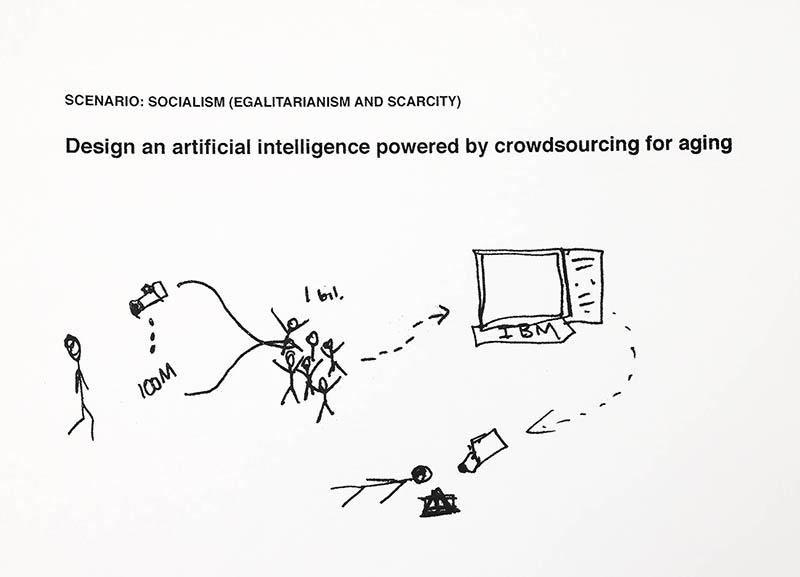
Millions of cameras installed in homes to monitor the processes of aging. Video feeds, categorized by Mechanical Turk workers, are then used to train IBM's Watson to recognize an aging-related emergency (or death) and take appropriate action (e.g. call an ambulance). 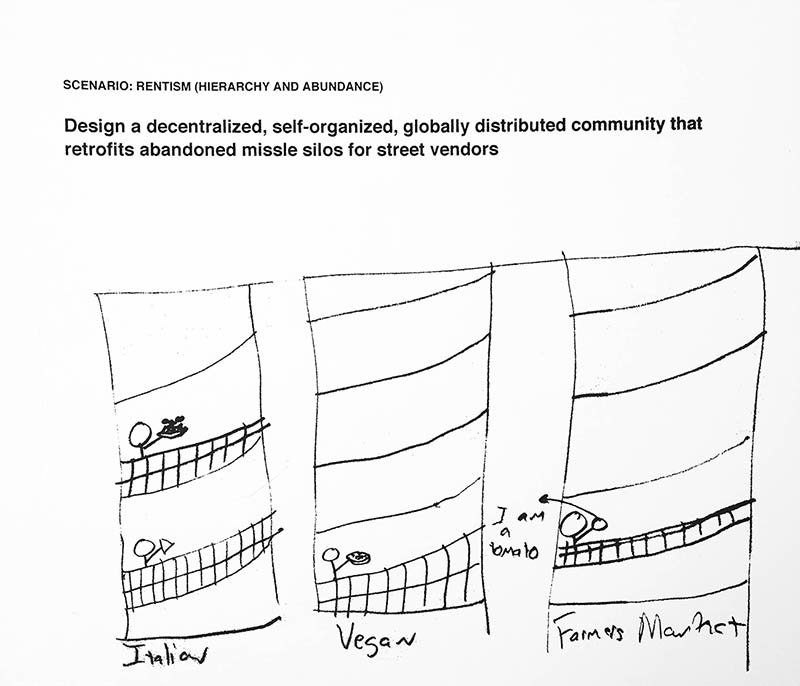
Retrofitted missle silos for street vendors, complete with farmers market and winding staircase architecture, "like the Guggenheim". 
U-Boat mobile app allows stranded users to summon rescue boats. Includes options for refugees and one-way trips. Another world is possible. We are all futurists now.
ACKNOWLEDGMENTS
Thank you to Venture Cafe STL for hosting this workshop.
Thank you to The Luminary for giving us the time and space to develop this project.
Thank you to our participants for the optimism and brilliant designs!
CREDITS: ANXIOUS TO MAKE IS THE COLLABORATIVE PRACTICE OF LIAT BERDUGO + EMILY MARTINEZ